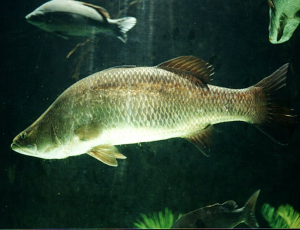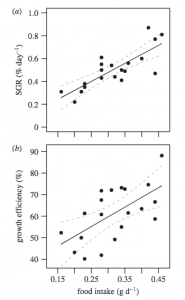Could Eating Smaller Meals Sometimes Benefit Predators More Than Eating Larger Meals?
By Jessica Daly, SRC intern
Sometimes, predators have the ability to choose what size prey to consume when feeding, but little is known about how this decision is made. Several previous research experiments have examined the relationship between prey size and “predator gape size,” or how long it takes to chase, capture, and consume the food. It has been hypothesized that predators may select their prey in part because of possible effects of prey size on digestion and metabolism, but evidence is required to support this.
Metabolism is the rate at which food is broken down into energy. Aerobic scope (AS) is the difference between an animal’s resting and maximum aerobic metabolism, and tells how well the animal can take in oxygen and provide energy to its cells. The specific dynamic action (SDA) measures how much energy is needed to digest and break down food, and is part of the AS. While eating bigger prey will provide more energy to a predator, bigger meals take more energy to metabolize and absorb than smaller meals. If the animal uses a lot of energy breaking down food, that means that it will have less energy to do things like fight or escape from a predator. Because of this, it was hypothesized that it might actually benefit the predator to intentionally choose smaller prey.

A barramundi, the predatory fish which was used as the model organism for this experiment. [Thorne, Nick. 14 July 2006. https://commons.wikimedia.org/wiki/File:Barramundi.jpg ]

Graphs depicting the relationship between growth rate (top) and growth efficiency (bottom) vs. food intake. Each barramundi is a data point. [Norin and Clark. https://miami.app.box.com/s/wjo39y4nm2ibw8eicf22fz4pgfgy9vhv/file/263749479008]
Works cited:
Norin T, Clark TD. 2017. Fish face a trade-off between ‘eating big’ for growth efficiency and ‘eating small’ to retain aerobic capacity. Biol. Lett. 13: 20170298. http://dx.doi.org/10.1098/rsbl.2017.0298




Leave a Reply
Want to join the discussion?Feel free to contribute!